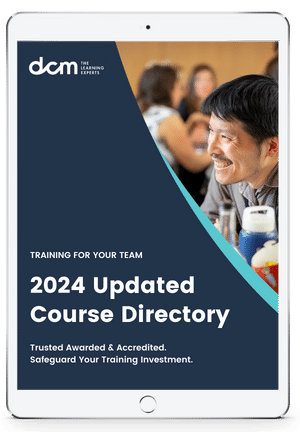The Scrum framework was born in the IT sector out of a need to deliver complex projects that are prone to change and uncertainty. Scrum breaks a software development project into incremental stages, allowing for changing customer requirements, evolving technological requirements or even changing market needs.
Where Did Scrum Come From?
With the introduction of many new technologies in the late 1980s and early 1990s, businesses wanted to explore what they could accomplish with these new technologies. However, because the scope of these new technologies wasn’t fully understood, businesses didn’t really know what they wanted from their developers and the developers weren’t entirely sure what these new technologies were capable of delivering.
Teams tried using a traditional Waterfall methodology when working on projects with these new technologies but found that Waterfall doesn’t really work when there’s any sort of uncertainty in the project. The Waterfall method takes a step-by-step, sequential approach to software development. This means bringing the project from conception to implementation with set steps in between.
In order to fully explore the capabilities of the new technology available to them and to find a new, better way of delivering their projects, developers & programmers designed a more Agile framework for managing their projects. The Agile methodology breaks a software development project into incremental stages, slowing building on successive stages with what are called “sprints”.
What Methodology Should I Use?
What method of project management you use for your software development project comes down to a number of key factors.
Waterfall may be best when there is no or limited access to a customer to provide constant feedback. It will best suit projects with a dispersed team and fixed scope and budget.
Agile is more suitable for larger, more complex projects, where there is access to the customer for feedback. Because of the inherent flexibility of the agile approach, it is preferred for projects with constantly changing requirements.
Based on a February 2019 poll on TrustRadius.com, fewer than one in five professionals said their organization uses the waterfall methodology. 81% said their organization uses the agile methodology instead.
Scrum is the most user-friendly framework for implementing Agile and is used by the likes of Google, IBM, Microsoft, Motorola and Siemens.
PSM Scrum Master Reviews: Stories from Our Customers
Over the past 2 years, almost 3,000 learners (2,819 to be exact) have come to DCM to learn more about scrum and get certified. Read (and watch) their reviews to see how our courses have helped them achieve their career goals.
Inhouse Tailored Training for Your Team
We provide training programs that are developed by industry, for industry. Our range of programs can be delivered in a way that suits the needs of your business to offer your employees learning that is accessible and flexible.
We add value to your business by providing specialised, flexible and scalable training that meets your training needs. As your workforce grows and evolves, our globally certified and industry-validated learning solutions can assess, train and qualify your employees. For more information on how we can help please visit the in-house training page.
Membership, Stay Connected. Stay Relevant.
Completing a program is a point-in-time exercise that delivers huge value, but there is a next step to maintaining the currency of your skills in the ever-evolving professional world.
Membership is the next step.
A unique platform, membership is designed to ensure that you are in tune and up-to-date with the latest tools, trends and developments. Being a member provides just-in-time training and continuous professional development, and an exclusive and evolving content library informed by subject matter experts and industry leaders.







